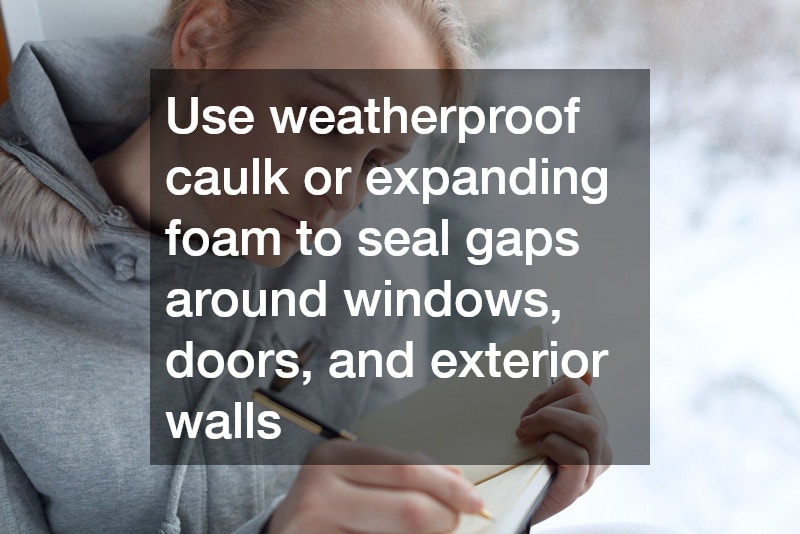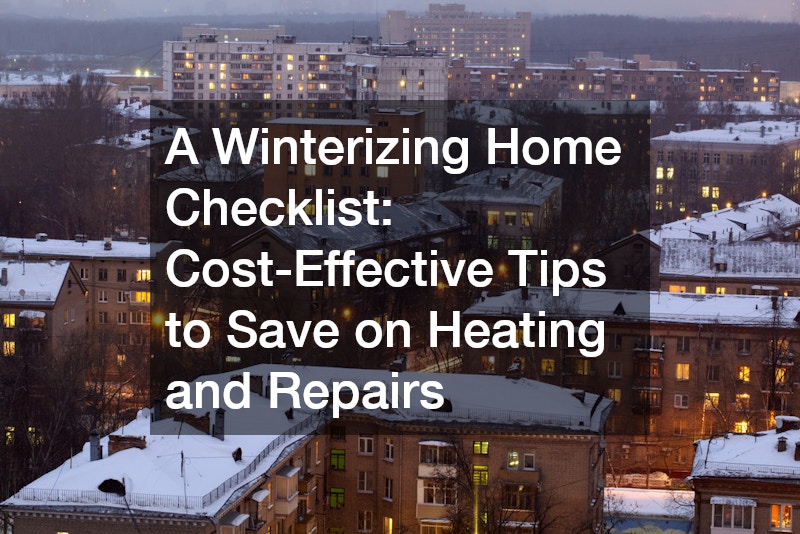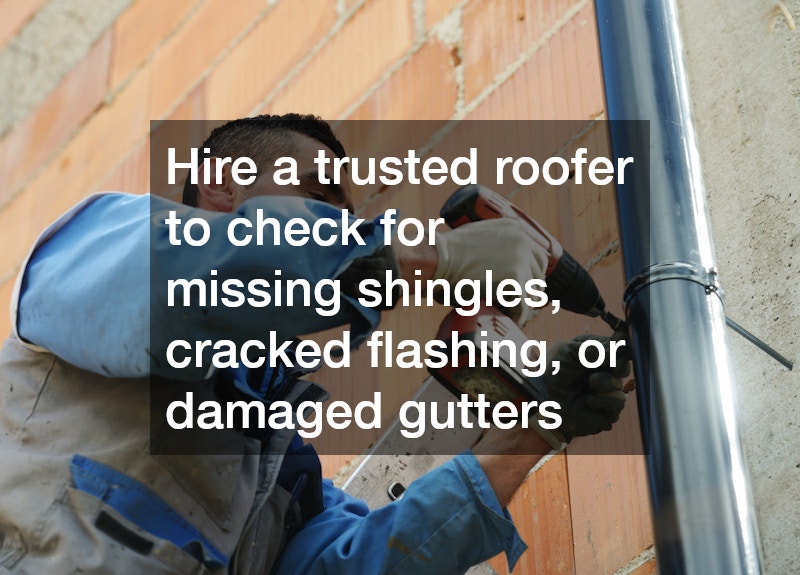A Winterizing Home Checklist: Cost-Effective Tips to Save on Heating and Repairs
Winterizing your home is an essential task that not only enhances comfort during the cold months but also contributes significantly to cost savings. By taking proactive steps to prepare your home for winter, you can reduce heating expenses and avoid expensive repairs. This winterizing home checklist will guide you through efficient ways to ensure your home remains warm, safe, and energy-efficient throughout the season.
1. Why Is Winterizing Your Home Important?
1.1. Preventing Heat Loss
Retaining heat during winter months is crucial for both comfort and cost savings. Proper winterization techniques, such as sealing drafts and adequate insulation, play a pivotal role in minimizing heat loss. Engaging air duct cleaning and repair companies can further enhance your home’s ability to retain warmth by ensuring that heated air circulates efficiently throughout your living space.
1.2. Minimizing Repair Costs
Winter is notorious for causing a range of home repairs, from frozen pipes to roof leaks. Taking proactive measures, such as insulating plumbing and reinforcing roofing, can significantly minimize these risks. By following a comprehensive winterizing home checklist, homeowners can address potential vulnerabilities before they escalate, ultimately saving on costly repair bills.
1.3. Enhancing Home Comfort
A well-prepared home not only stays warmer but also becomes a cozy haven away from the harsh winter weather. Enhancing your home comfort involves ensuring your water heaters are in top condition and that rooms are free from drafts. Such winterizing measures create a pleasant indoor environment, making those chilly days more bearable.
2. How to Insulate Your Home Effectively
2.1. Evaluating Current Insulation
Assessing your home’s current insulation is a critical first step in the winterizing home checklist. Homeowners should inspect attic spaces, basements, and exterior walls for existing insulation material and its condition. Using simple tools or even professional services can help determine if upgrades or replacements are needed.
2.2. Choosing the Right Insulation Materials
Various insulation materials offer different levels of effectiveness and benefits. Fiberglass, foam board, and spray foam are popular choices among homeowners. Consulting with garage door installation services may also provide insights on insulation opportunities specific to your garage area, ensuring a comprehensive approach across all parts of the home.
2.3. DIY vs. Professional Insulation
Deciding whether to undertake insulation on your own or hire professionals is an important consideration. DIY projects can be cost-effective but might lack the precision and efficiency that professional roofers and insulation experts provide. Evaluating the scope of the work and personal expertise can guide you towards the most suitable option for your needs.

3. What Are the Best Ways to Seal Drafts?
3.1. Identifying Common Air Leaks
A critical part of the winterizing home checklist is locating potential air leaks. These are often found near windows, doors, and areas with gaps in the structure. Roofers can also inspect attic spaces and ceilings to ensure no drafts contribute to heat loss, effectively complementing your sealing initiatives.
3.2. Tools and Materials Needed
Embarking on a sealing project requires specific tools and materials to ensure success. Homeowners should stock up on weather stripping, caulking guns, and insulation foam. These materials are essential for addressing all identified leaks, forming a barrier against external cold air.
3.3. Step-by-Step Sealing Instructions
Sealing drafts effectively involves a meticulous, step-by-step approach. Begin by thoroughly cleaning the areas around identified leaks to ensure the adhesives stick properly. Apply weather stripping along windows and doors, and use caulking for narrow gaps, making sure to consider any home additions that need extra attention.
4. How Can I Winterize My Windows and Doors?
4.1. Installing Weather Stripping
Weather stripping is a simple yet effective way to winterize your windows and doors. It involves applying a thin layer of insulating material around the frames, preventing drafts and conserving heat. By regularly checking and maintaining these strips, homeowners can enhance their home’s energy efficiency significantly.
4.2. Window Film Installation
Applying a window film provides an additional layer of insulation, reducing heat loss through glass surfaces. This step in the winterizing home checklist involves cutting the film to size, adhering it to the window, and using a hairdryer to ensure a smooth, tight fit. The film not only conserves heat but also offers a degree of UV protection.
4.3. Using Door Sweeps
Door sweeps are essential tools in preventing cold air from entering under exterior doors. Easy to install, they create a seal along the door bottom. Regular inspection and replacement when worn out ensure ongoing efficiency and contribute to the overall success of your winterizing efforts.
5. What About My Roof and Gutters?
5.1. Inspecting Roof Integrity
Ensuring your roof’s integrity is fundamental to a winter-ready home. Conduct a detailed roof inspection, looking for damaged or loose shingles and potential leak points. Consulting with a roofer for an expert assessment can provide peace of mind and help craft a comprehensive repair plan.
5.2. Cleaning and Repairing Gutters
Clean gutters are crucial in preventing water damage to your home during winter. Regular maintenance helps to avoid blockages that can lead to overflow and ice accumulation. Keeping gutters clear ensures smooth water flow away from your home, reducing the risk of leaks and other structural issues.
5.3. Preventing Ice Dams
Ice dams are a common winter hazard that can cause significant roof damage. Proper insulation and ventilation are critical in preventing their formation. This component of the winterizing home checklist highlights the need for consistent temperature regulation in your attic, reducing the chances of ice build-up.
6. Is Furnace Maintenance Necessary?
6.1. Scheduling Regular Inspections
Furnace maintenance is a vital part of preparing your home for the winter season. Regular inspections help identify early signs of potential issues, ensuring efficient operation. Partnering with heating and cooling experts ensures that all components are working optimally, minimizing unexpected breakdowns.
6.2. Filter Replacement
Replacing furnace filters is essential for maintaining clean air and efficient heating. Dirty filters restrict airflow, forcing your HVAC system to work harder and increasing energy costs. By including filter checks and replacements in your winterizing home checklist, you ensure energy efficiency and system longevity.
6.3. DIY vs. Professional Servicing
Homeowners may opt for DIY furnace servicing to save on costs; however, professional services often provide more thorough maintenance. HVAC repair specialists offer comprehensive inspections and cleaning that might not be achievable with personal attempts. Evaluating your abilities and the furnace’s condition can guide your choice in approach.

7. How Can I Prepare My Plumbing for Winter?
7.1. Insulating Pipes
Insulating pipes is crucial in preventing freezing and subsequent bursting during cold spells. This step involves wrapping exposed pipes in insulation foam or other suitable materials. Implementing this measure ensures the plumbing system remains operational throughout the winter months.
7.2. Draining Outside Faucets
Draining exterior faucets helps to safeguard your home against potential winter plumbing issues. This preventive measure entails shutting off water supply lines and opening the spigots to drain any remaining water. Such precautions are essential in your winterizing home checklist to avoid costly plumbing repairs from frozen pipes.
7.3. Identifying Pipe Vulnerabilities
Proactively identifying areas of your plumbing system that are susceptible to freezing can minimize risks effectively. This includes checking for insulation gaps and addressing leaks promptly. By understanding pipe vulnerabilities, homeowners can take steps to reinforce these areas and avoid the risk of expensive plumbing repairs.
8. What Are Cost-Effective Energy-Saving Tips?
8.1. Smart Thermostat Usage
Smart thermostats are a modern solution for optimizing home heating and reducing energy costs. These devices allow homeowners to control temperatures remotely, adjusting settings as needed. Integrating smart thermostats into your winterizing home checklist can lead to significant savings on your heating bills.
8.2. Energy-Efficient Lighting
Switching to energy-efficient lighting can contribute to lower electricity consumption during winter months. LED bulbs and smart lighting systems reduce energy output while maintaining quality illumination. Small adjustments in home lighting can make a noticeable impact on overall household energy expenses.
8.3. Unplugging Unused Electronics
Electronics and appliances left plugged in continue to draw power, even when not in use. Unplugging idle devices prevents unnecessary energy waste and reduces consumption. Incorporating this habit into your winterizing home checklist can lead to noticeable savings on energy bills over time.
9. How to Protect Hardwood Floors and Carpets?
9.1. Using Rugs and Mats
Placing rugs and mats in high-traffic areas helps protect hardwood floors and carpets from dirt, moisture, and cold. These coverings provide an additional insulation layer and can improve comfort in living spaces. Regular maintenance of these installations prolongs their protective benefits and enhances the wintertime ambiance.
9.2. Maintaining Humidity Levels
Controlling home humidity is key to preserving flooring and ensuring comfort during winter. Dry air can cause wood to contract and crack, leading to potential damage. Using a humidifier keeps air moisture balanced, protecting floors and enhancing indoor air quality.
9.3. Seasonal Floor Care Tips
Implementing specific care practices for floors during winter can maintain their appearance and longevity. Regular cleaning and the application of appropriate protective finishes ensure that surfaces withstand harsh conditions. Following a winterizing home checklist helps maintain aesthetic appeal and functionality of your flooring.
10. How to Prepare Your Chimney and Fireplace
10.1. Chimney Inspection and Cleaning
Regular chimney inspections are essential for safe and efficient fireplace usage. Clear chimneys of soot and debris to prevent blockages and chimney fires. Incorporating chimney maintenance into your winterizing home checklist ensures efficient smoke passage and minimizes health risks.
10.2. Fireplace Safety Measures
Ensuring a safe fireplace involves checking for structural stability and functional components. Installing a screen or glass doors prevents embers from escaping into the living area. Adhering to safety measures enhances both the warmth and security of your home’s environment.
10.3. Efficient Fireplace Usage
Maximizing fireplace efficiency involves strategic usage and maintenance practices. Burning seasoned wood, ensuring proper ventilation, and regularly cleaning the firebox are key practices. A well-maintained fireplace contributes to warming your home effectively, complementing broader heating strategies.
11. Other Things to Look Into Before Winter
Protecting Your Driveway from Winter Damage
Driveways, especially asphalt ones, are prone to significant wear and tear during winter due to freeze-thaw cycles, snow, ice, and road salts. These conditions can cause cracks to expand, potholes to form, and surfaces to deteriorate.
Why it matters:
- Structural integrity: Small cracks allow water to seep in. When temperatures drop, the water freezes and expands, worsening the damage.
- Safety: Potholes and uneven surfaces can become trip hazards, especially when hidden by snow.
- Cost savings: Proactively repairing and sealing a driveway prevents expensive full-scale replacements later.
Actionable steps:
- Inspect and repair cracks: Before winter, walk your driveway and check for any cracks or uneven areas. Use asphalt patching products for small repairs or hire a trusted asphalt paving contractor for professional results. Repairing cracks costs $300–$500, while replacing a driveway can exceed $10,000.
- Sealcoat the surface: A high-quality sealant creates a protective barrier against moisture, snow, and salt. Sealcoating every 2–3 years costs $300–$500 and can extend the life of your driveway by a decade.
- Ensure proper drainage: Check for standing water or poor drainage near the driveway, which exacerbates freeze-thaw damage. Consider grading or installing drainage systems if needed.
Winterizing Your Lawn and Garden
Your lawn and garden require care to survive the harsh winter months and come back healthy in spring. Neglecting these areas can result in dying grass, damaged plants, and soil erosion.
Why it matters:
- Preserving plant health: Proper preparation shields vegetation from cold temperatures and prevents frost damage.
- Erosion prevention: Bare soil is vulnerable to winter winds and water runoff, leading to nutrient loss and uneven surfaces.
- Spring readiness: A well-prepped lawn and garden recover faster, reducing the time and cost needed for spring rejuvenation.
Actionable steps:
- Clear debris: Rake leaves, remove dead plants, and clear debris from your lawn and garden beds. Organic matter left to decompose can harbor pests and diseases, which might resurface in spring.
- Aerate and fertilize: Aerate your lawn to improve oxygen flow and apply a winter-specific fertilizer to strengthen roots during dormancy. Winter fertilizers are typically higher in potassium, which boosts cold tolerance.
- Protect garden beds: Apply a layer of mulch or straw to garden beds to insulate soil and retain moisture. Mulch also prevents soil erosion and suppresses weeds.
- Cover delicate plants: Use burlap or frost blankets to shield young trees, shrubs, and perennials from snow and ice. These coverings protect plants from temperature fluctuations and windburn.
Winterizing your home involves comprehensive planning and execution to achieve optimal comfort, safety, and cost savings. From insulation and draft sealing to energy efficiency and roof integrity, each element in the winterizing home checklist plays a critical role. By preparing meticulously, homeowners can enjoy a warm refuge during the cold months, free from the worry of unforeseen costs and hassles.

